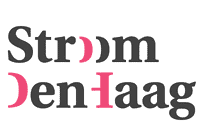Eja Siepman van den Berg, Nike, 1993, brons foto: Renate Boere, Cas Marks, Laurens van der Pool
Eja Siepman van den Berg, 'Nike', 1993
Eja Siepman van den Berg, Nike, 1993
Location: Centrum The Hague: Spui - Grote Marktstraat - Kalvermarkt
The most famous goddess of victory resides in the Louvre: the winged "Nike of Samothrace," a masterpiece of late Greek sculpture, though sadly missing its head. The Hague also has its own "Nikes," one of which was created by sculptor Eja Siepman van den Berg (1943) for the pedestal project. Her "Nike," displayed in the city center, has no wings (only a portion of the upper arm remains), no lower legs or feet, and, like its ancient counterpart, no head. The goddess is transformed into a torso.
The French sculptor Auguste Rodin (1840-1917) was the first to assert that a fragment of the body, such as a torso, hand, or foot, possesses enough sculptural power to function autonomously. He elevated incompleteness to an aesthetic principle, inspiring countless artists. Siepman van den Berg arrived at the torso as the central theme of her work through a different path. As a young artist, she deeply admired Romanian/French sculptor Constantin Brancusi (1876-1957), who progressed from sculpting heads to creating the perfect egg form.
Like Brancusi, Siepman van den Berg sought the essence of form by significantly abstracting the human figure. Her exploration culminated in the removal of limbs, allowing her to focus entirely on shape, enhancing the sculptural quality. The torso, being incomplete, best conveys emotional tension. Siepman van den Berg masterfully evokes that tension beneath the taut, gleaming surface of her bronze and marble works. Stylized and meticulously finished, with posture and pose in complete stillness, her seemingly distant yet intensely sensual figures reflect the purity of young, self-assured life. Unconquerable, like Nike.


